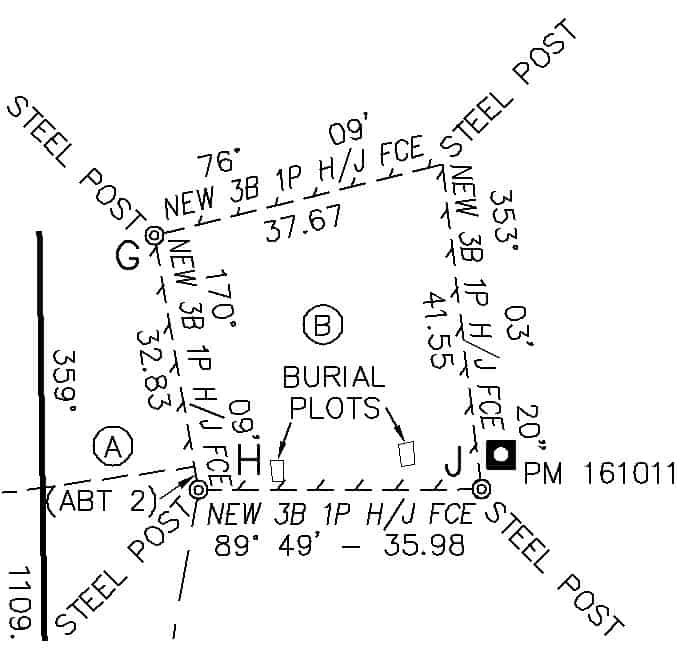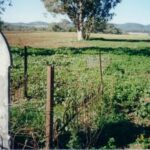Doherty Smith & Associates is now Compass Consulting Surveyors
Click here to see this blog and more on our new website compasscs.com.au
“That’s where the Chinaman’s buried…”
Not something you hear every day, but the range of things a surveyor deals with is astonishing at times! In this case, the survey was to create an Easement for Burial Site. Within the small fenced plot was an unmarked grave, known only as the Chinaman’s grave. The identity of the person buried there was lost to history. The land owner has also interred a family member nearby which has led to the requirement for an easement.
 |
While less common in recent times, the practice of burying family members in a private cemetery located on a property has not been completely discarded. As long as the property remains in the ownership of the family, generally there is no major problem. Should the property be sold, or relationships within a family break down, problems with accessing the site can arise. The usual method of retaining access to such a family cemetery is to create an easement or covenant. In recent times, development consent from a local council may be required to use a private cemetery, with conditions of consent including the creation of easements for burial ground and access.
In order for an easement or covenant to be created, a dominant tenement must be identified. The dominant tenement should be either another piece of land or a statutory authority, such as a local council. Since the family of the deceased may not own any adjoining land, the benefit of the easement can be conferred on the local council.
Usually, rights of way or access will need to be created across the property to the location of the burial plot.
The burial ground can be created as either an Easement for Burial Site affecting the land comprising the burial plot, or as a Restriction on the Use of Land or positive covenant over the burial site, with the statutory authority listed in the Section 88B instrument as the dominant tenement for either case. The conditions relating to access should also be addressed in the easement, for example whether access is restricted to direct descendants of the deceased, or open to the general public. The terms of the easement should also specify who is responsible for on-going maintenance of the site and access road if applicable.
The plan itself defines the location, size and shape of the burial plot within the parcel. It may be possible to create the plan without the requirement for survey if the requirements for compiled plans can be met.
While the true identity of the Chinaman may not be known, at least once the plan to create an Easement for Burial Ground is registered his final place of rest will be recorded. Now that’s where the Chinaman’s buried.
Eric Smith
Registered Surveyor



